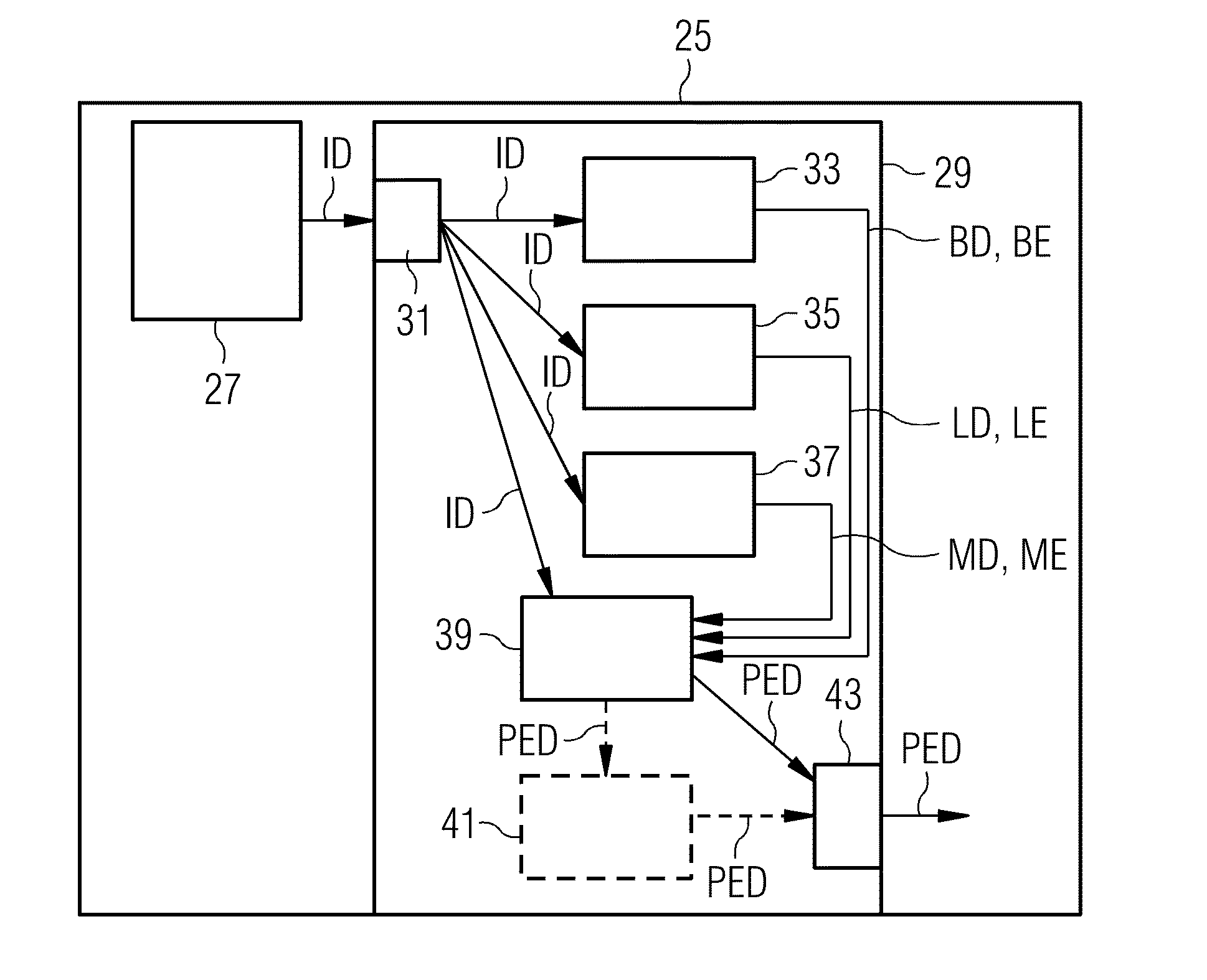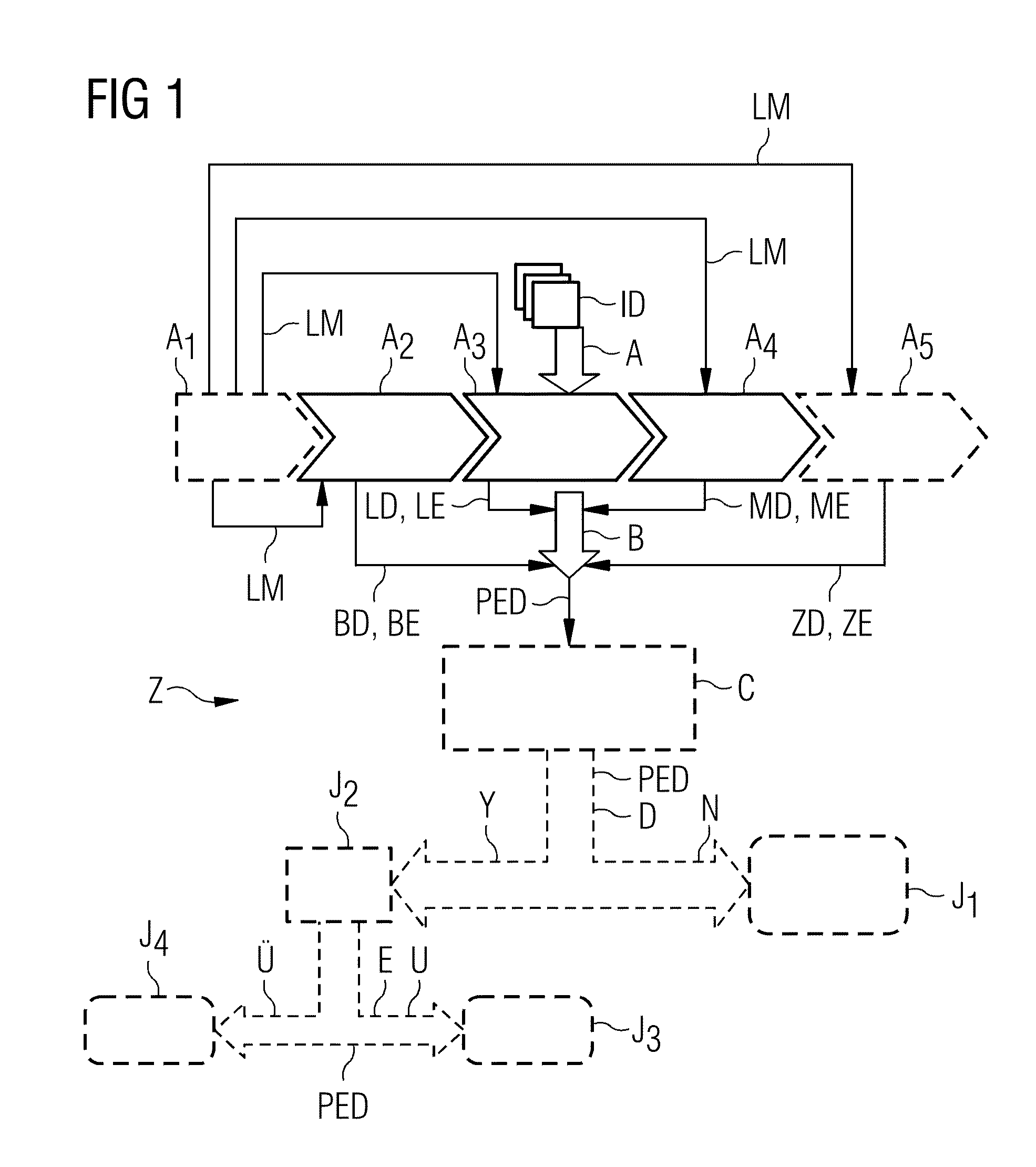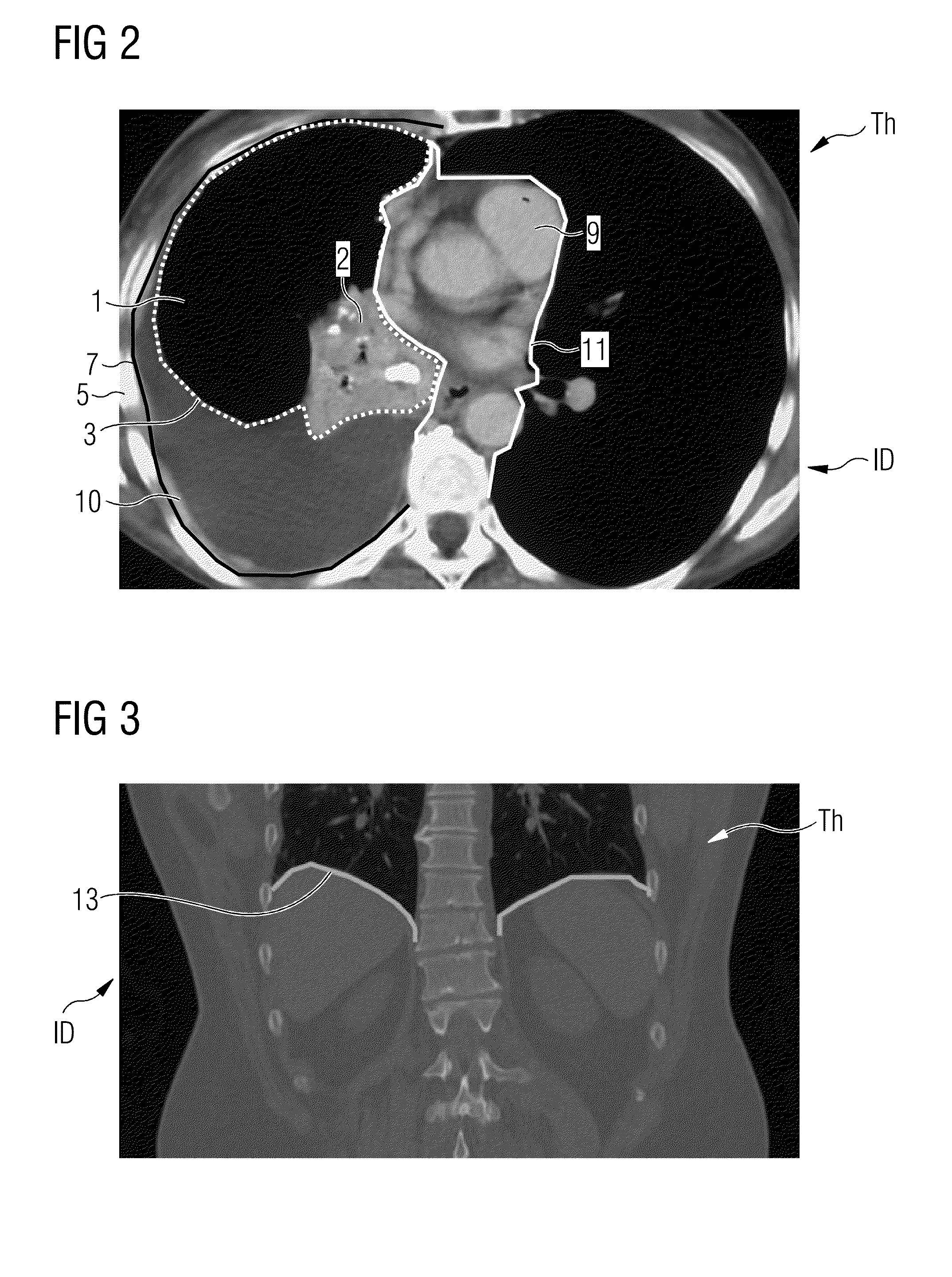Automatic identification of a potential pleural effusion
a technology of pleural effusion and automatic identification, which is applied in the field of automatic identification of potential pleural effusions, can solve the problems of suffocation of patients, inaccurate pleural effusion identification data, and time-consuming determination, just like manual segmentation,
- Summary
- Abstract
- Description
- Claims
- Application Information
AI Technical Summary
Benefits of technology
Problems solved by technology
Method used
Image
Examples
Embodiment Construction
[0063]FIG. 1 shows a schematic flowchart of an exemplary embodiment of the method Z according to embodiments of the invention for identifying a potential pleural effusion. Here, image data ID of a patient are subjected to an automatic identification of a potential pleural effusion in a step A. This step A comprises a plurality of sub-steps A1, A2, A3, A4, A5 (some of which are mandatory, some of which are optional). In a first, optional sub-step A1, there is a landmark detection A1 in the image data ID, with the aid of which landmarks LM are extracted, which landmarks may serve for orientation in the image data ID and, in particular, for segmenting individual organs or structures. A second sub-step A2 is an acceptance A2 of rib cage detection data BD of the rib cage of the patient from the image data. These rib cage detection data BD comprise rib cage extent data BE, i.e. data which represent the rib cage extent of the interior of the rib cage of the patient.
[0064]This acceptance ma...
PUM
 Login to View More
Login to View More Abstract
Description
Claims
Application Information
 Login to View More
Login to View More - R&D
- Intellectual Property
- Life Sciences
- Materials
- Tech Scout
- Unparalleled Data Quality
- Higher Quality Content
- 60% Fewer Hallucinations
Browse by: Latest US Patents, China's latest patents, Technical Efficacy Thesaurus, Application Domain, Technology Topic, Popular Technical Reports.
© 2025 PatSnap. All rights reserved.Legal|Privacy policy|Modern Slavery Act Transparency Statement|Sitemap|About US| Contact US: help@patsnap.com



